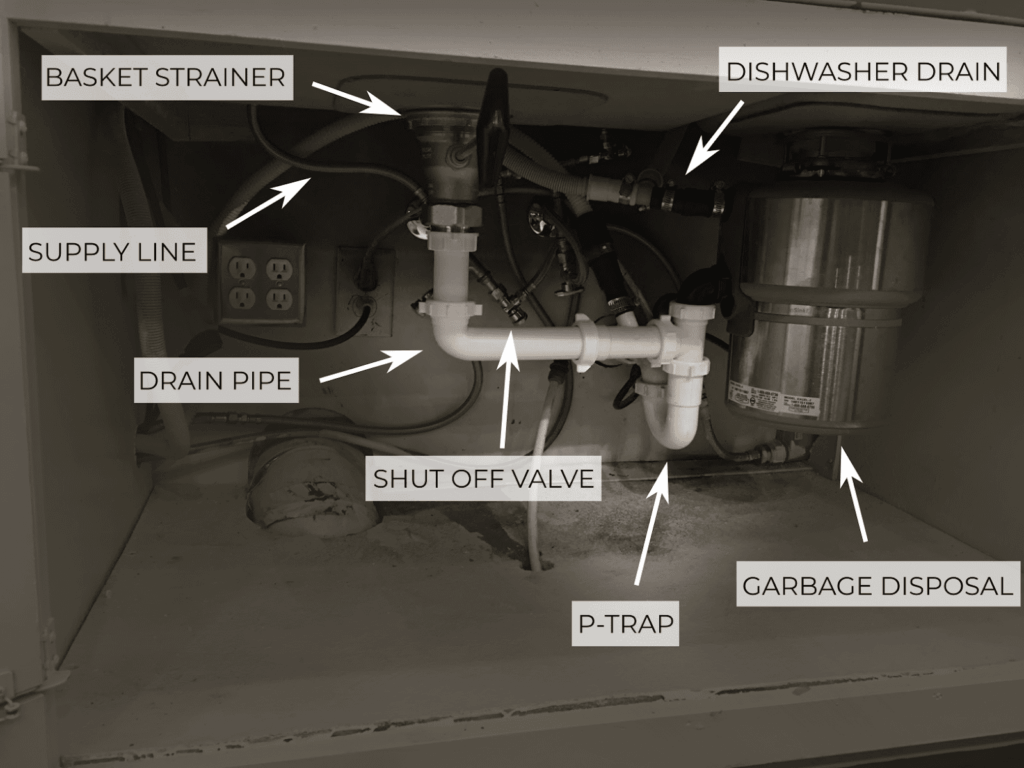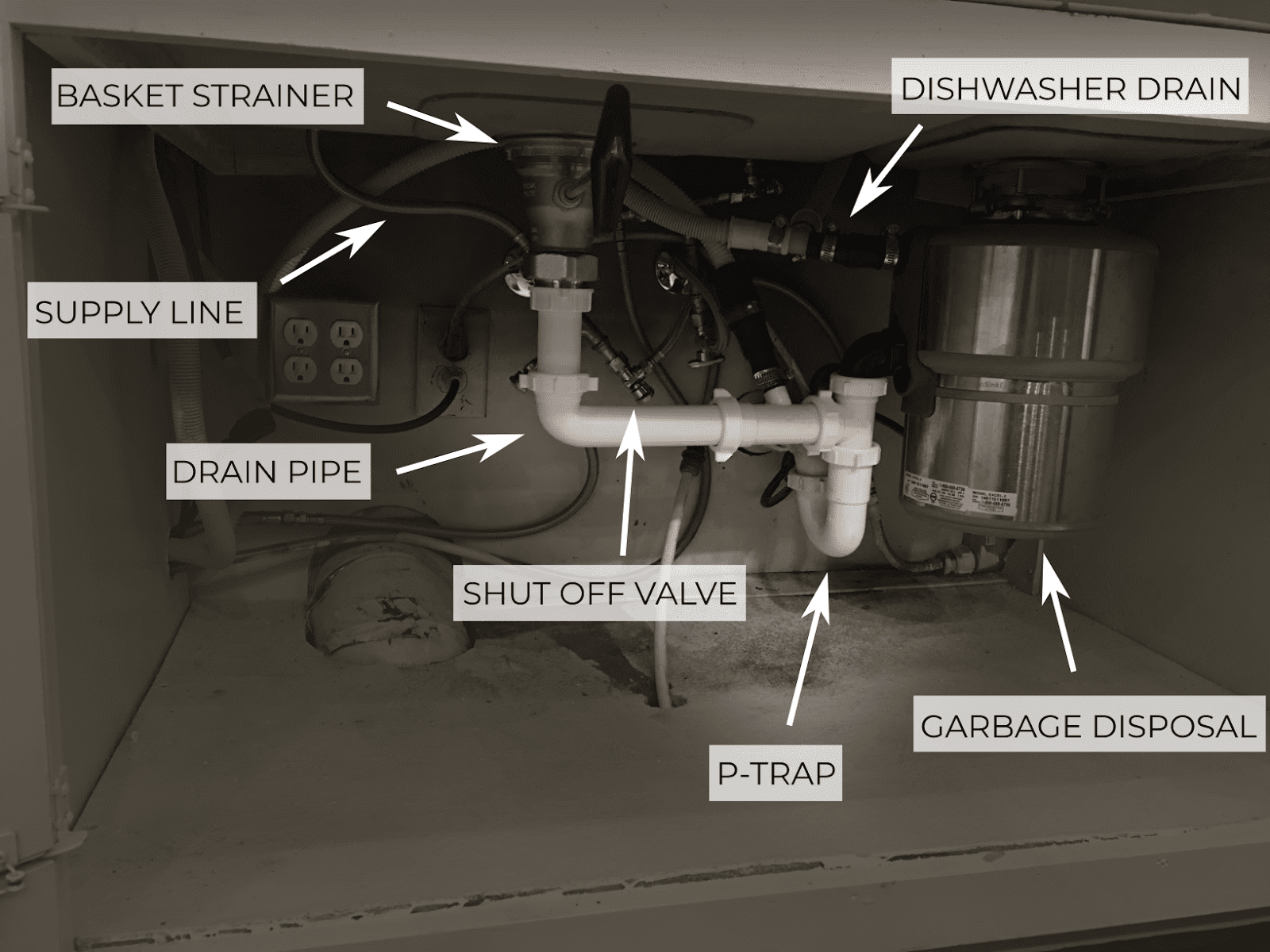
Help! The Pipe Under the Sink Is Leaking: A Comprehensive Guide
Discovering that the pipe under the sink is leaking can be a homeowner’s nightmare. The steady drip, drip, drip is not only annoying but can also lead to water damage, mold growth, and costly repairs if left unattended. This guide provides a comprehensive overview of what to do when you notice a pipe under the sink is leaking, covering everything from identifying the source of the leak to temporary fixes and knowing when to call a professional. We aim to equip you with the knowledge and confidence to tackle this common household problem effectively.
Identifying the Source of the Leak
Before you can fix a pipe under the sink is leaking, you need to pinpoint where the water is coming from. Common culprits include:
- Loose Connections: The nuts and fittings connecting the pipes may have loosened over time due to vibrations or temperature changes.
- Corrosion: Older pipes, especially those made of metal, can corrode and develop leaks.
- Damaged Washers or O-Rings: These rubber or plastic seals can deteriorate, crack, or become brittle, leading to leaks.
- Cracked Pipes: Physical damage, such as impact or freezing temperatures, can cause pipes to crack.
- Clogged Drains: Backed-up water can put pressure on the pipes and connections, leading to leaks.
To identify the exact source, thoroughly inspect the entire area under the sink, including the pipes, connections, drain, and garbage disposal (if applicable). Use a flashlight to get a better view of hard-to-reach areas. Dry the area with a cloth and watch closely to see where the first drops of water appear. This careful observation is critical for effective repair.
Immediate Actions When a Pipe Under the Sink Is Leaking
When you discover that the pipe under the sink is leaking, act quickly to minimize damage:
- Turn Off the Water Supply: Locate the shut-off valves under the sink, usually small handles on the pipes leading to the faucet. Turn them clockwise until they are fully closed. If there are no shut-off valves under the sink, you’ll need to turn off the main water supply to your house. This is typically located in the basement, garage, or near the water meter.
- Contain the Leak: Place a bucket or container under the leaking pipe under the sink to catch the dripping water. This will prevent water from spreading and damaging your cabinets and flooring.
- Dry the Area: Use towels or cloths to soak up any standing water. This will help prevent mold growth and further damage.
Temporary Fixes for a Leaking Pipe
While these are not permanent solutions, they can buy you some time while you arrange for proper repairs:
- Plumber’s Tape (Teflon Tape): Wrap plumber’s tape around leaky threaded connections after cleaning and drying the area. Apply several layers, overlapping each wrap, and tighten the connection.
- Pipe Repair Clamp: If the pipe under the sink is leaking due to a small crack or hole, a pipe repair clamp can be used to temporarily seal the damage. These clamps consist of a rubber sleeve and a metal band that tightens around the pipe.
- Epoxy Putty: For small leaks, epoxy putty can be molded around the damaged area after cleaning and drying the surface. Follow the manufacturer’s instructions for mixing and application.
- Rubber and Duct Tape: In a pinch, wrapping a piece of rubber (such as a bicycle inner tube) around the leak and securing it with duct tape can provide a temporary seal.
Remember, these are temporary solutions. A permanent repair is necessary to prevent further damage and ensure the integrity of your plumbing system. Ignoring a pipe under the sink is leaking can lead to significant structural damage over time.
Tools and Materials You Might Need
Depending on the type of leak and the repair you’re attempting, you might need the following tools and materials:
- Adjustable Wrench: For tightening and loosening nuts and fittings.
- Pliers: For gripping and holding pipes and fittings.
- Screwdrivers: Both Phillips and flathead screwdrivers might be needed.
- Plumber’s Tape (Teflon Tape): For sealing threaded connections.
- Pipe Repair Clamp: For temporarily sealing cracks or holes in pipes.
- Epoxy Putty: For patching small leaks.
- Replacement Washers or O-Rings: If the leak is due to damaged seals.
- Bucket or Container: To catch dripping water.
- Towels or Cloths: To dry the area.
- Flashlight: To inspect hard-to-reach areas.
When to Call a Professional Plumber
While some minor leaks can be fixed with DIY methods, there are situations where it’s best to call a professional plumber. Consider calling a plumber if:
- You can’t identify the source of the leak: If you’ve thoroughly inspected the area and still can’t find where the water is coming from, a plumber can use their expertise to diagnose the problem.
- The leak is severe: If the pipe under the sink is leaking heavily or is causing significant water damage, it’s best to call a plumber immediately to prevent further damage.
- The pipes are corroded or damaged: If the pipes are severely corroded, cracked, or otherwise damaged, they may need to be replaced, which is a job best left to a professional.
- You’re not comfortable working with plumbing: If you’re not confident in your ability to fix the leak, it’s always best to call a plumber to avoid making the problem worse.
- The leak involves hot water pipes: Working with hot water pipes can be dangerous, so it’s best to call a plumber.
- You suspect a larger plumbing issue: Sometimes, a pipe under the sink is leaking can be a symptom of a larger plumbing problem within your home. A plumber can assess the situation and identify any underlying issues.
Preventing Future Leaks
Prevention is always better than cure. Here are some tips to help prevent future leaks under your sink:
- Regularly Inspect Your Plumbing: Check under your sink for signs of leaks, corrosion, or damage.
- Tighten Loose Connections: Periodically tighten the nuts and fittings on your pipes to prevent them from loosening.
- Replace Old or Corroded Pipes: If your pipes are old or corroded, consider replacing them with newer, more durable materials.
- Avoid Over-Tightening Connections: Over-tightening can damage the fittings and cause them to leak.
- Be Careful with Drain Cleaners: Harsh drain cleaners can corrode pipes over time, so use them sparingly and follow the manufacturer’s instructions.
- Protect Pipes from Freezing: In cold climates, insulate your pipes to prevent them from freezing and bursting.
Understanding Different Types of Pipes
Knowing the type of pipe you’re dealing with is crucial for effective repair. Common types include:
- PVC (Polyvinyl Chloride): Commonly used for drain lines, PVC is durable and resistant to corrosion.
- CPVC (Chlorinated Polyvinyl Chloride): Similar to PVC but designed to withstand higher temperatures, making it suitable for hot water lines.
- PEX (Cross-linked Polyethylene): Flexible and easy to install, PEX is often used for both hot and cold water lines.
- Copper: A traditional plumbing material known for its durability and resistance to corrosion.
- Galvanized Steel: Less common in modern homes, galvanized steel is prone to corrosion and can lead to leaks.
Identifying the material of the pipe under the sink is leaking helps you choose the correct repair methods and materials. For example, attempting to solder a PVC pipe is not only ineffective but also dangerous.
Long-Term Solutions
For long-term peace of mind, consider:
- Replacing Old Plumbing: If your home has outdated plumbing, replacing it with modern materials can significantly reduce the risk of leaks.
- Installing a Leak Detection System: These systems can detect leaks early on and alert you to potential problems before they cause significant damage.
- Regular Plumbing Inspections: Schedule regular plumbing inspections with a qualified plumber to identify and address any potential issues before they become major problems.
Dealing with a pipe under the sink is leaking can be frustrating, but by following the steps outlined in this guide, you can effectively address the problem and prevent future leaks. Remember to prioritize safety and call a professional plumber when needed. [See also: How to Find a Reputable Plumber] Ignoring a seemingly small leak can lead to significant water damage and costly repairs down the line.

